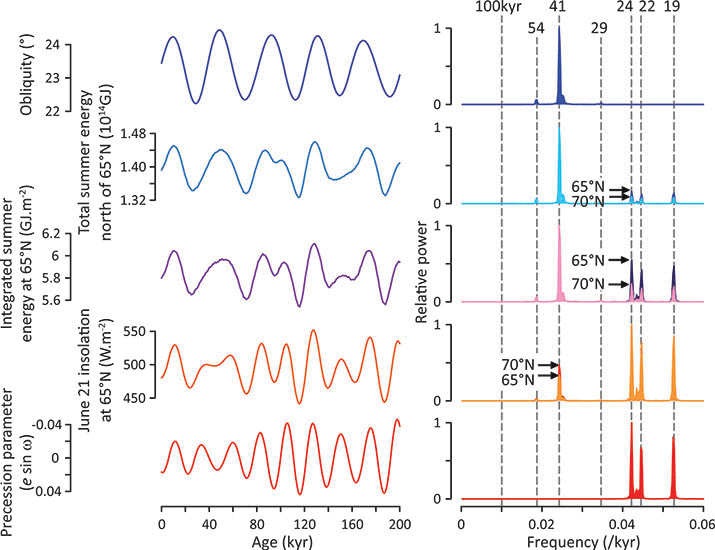
Published in [Science] on May 26, 2022( https://www.science.org/doi/10.1126/science.abm4033 ) 》In a new study in the journal, a research team from Cardiff University has been able to accurately point out how the tilt and swing of the earth around the sun have affected the melting of ice sheets in the northern hemisphere in the past 2million years or so.
Scientists have long realized that the growth and decline of large-scale ice sheets in the northern hemisphere is caused by changes in the geometry of the earth's orbit around the sun.
The geometry of the earth can affect the melting of ice sheets in two ways: inclination and precession. Inclination is the inclination of the earth around the sun. It is the reason why the earth has different seasons.
Precession is the wobble of the earth as it rotates, much like a gyroscope slightly off center. This swing angle means that sometimes the northern hemisphere is closest to the sun, while at other times the southern hemisphere is closest to the sun, which means that about every 10000 years, one hemisphere will be warmer in summer than the other before switching.

Scientists have determined that in the past onemillion years or so, through the complex interaction within the climate system, the combined impact of inclination and precession on the growth and decline of ice sheets in the northern hemisphere has led to the ice age cycle lasting about 100000 years.
However, a million years ago, in a period known as the early Pleistocene, the duration of glacial cycles was controlled only by inclination, and these glacial cycles were almost exactly 41000 years.
For decades, scientists have been wondering why precession did not play a more important role in driving the ice age cycle during this period.
In their new study, the Cardiff University team revealed new evidence that precession did play a role in the early Pleistocene.
Their results show that the stronger summer driven by precession has always led to the melting of ice sheets in the northern hemisphere, but these events were less destructive and did not lead to the complete collapse of ice sheets a million years ago.
Professor Stephen Barker of the school of earth and Environmental Sciences at Cardiff University, the lead author of the study, said: "the ice sheets in the early Pleistocene in the northern hemisphere are smaller than the recent ice sheets, and are limited to high latitudes, where the impact of inclination is greater than that of precession. This may explain why it took us so long to find evidence of precession forcing during the early Pleistocene."
"These findings are the result of a major effort, involving more than 12 years of hard work. Nearly 10000 samples were processed in the laboratory and a series of new analytical methods were developed. Thanks to this, we can finally solve a long-standing problem in paleoclimatology and finally promote a better understanding of the earth's climate system."
"If we want to predict the changes in the next century and beyond, it is crucial to improve our understanding of the earth's climate dynamics, even in the distant past. The ongoing changes may be man-made, but there is only one climate system, and we need to understand it."